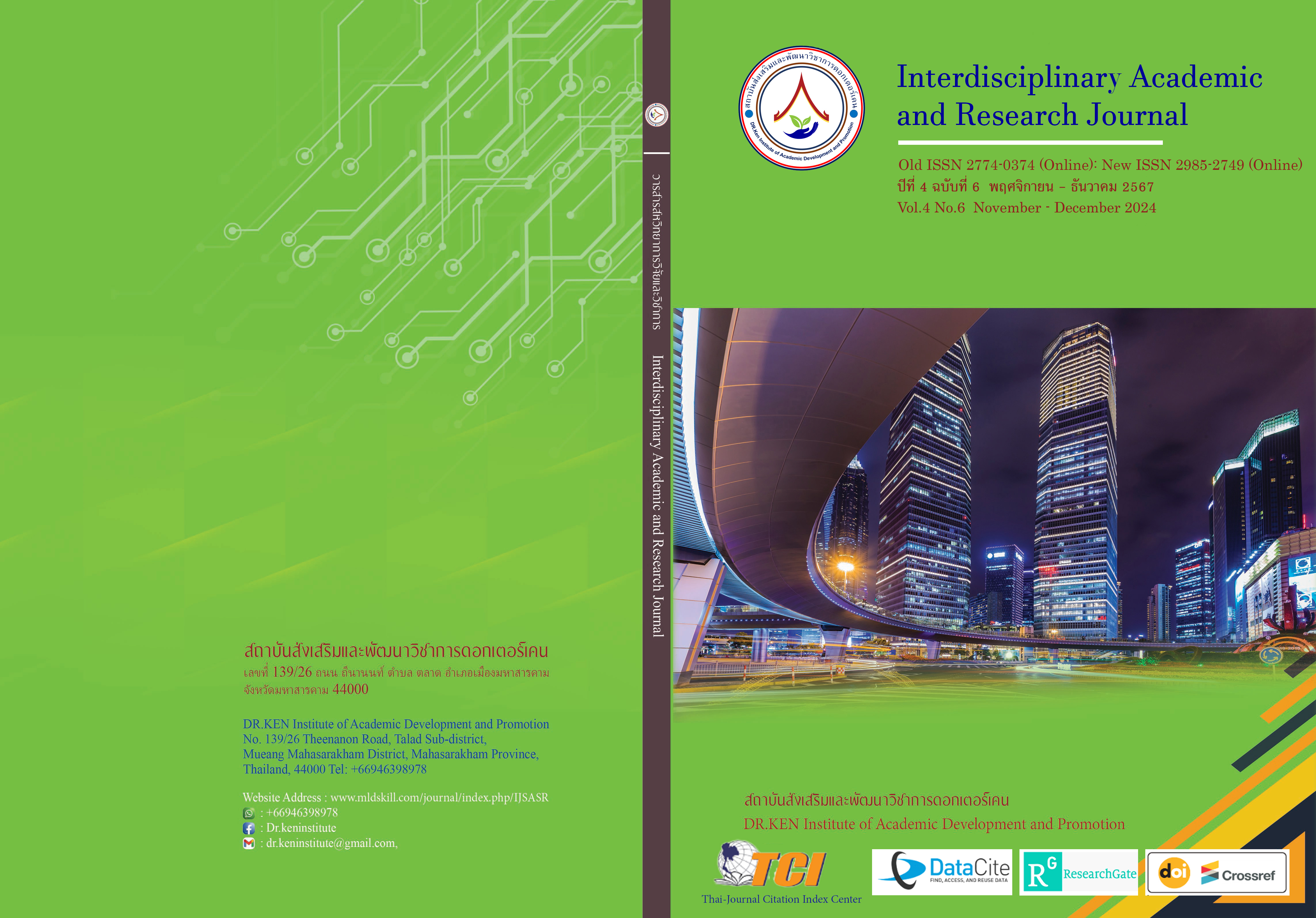The Transition to Industry 5.0 and Analysis of Government Promotion Policies for Small and Medium Enterprises (SMEs) in Thailand
DOI:
https://doi.org/10.60027/iarj.2024.277743Keywords:
Industry 5.0, Government Promotion Policies for Small and Medium Enterprises (SMEs) in ThailandAbstract
Background and Aims: The transition to Industry 5.0 is affecting government policies around the world. In 2018, the Thai government announced the Thailand 4.0 policy. Currently, 3 government agencies have accelerated the promotion and development of entrepreneurs to support the transition along with the development of innovation. Including the Thailand Productivity Institute (TIP), National Science and Technology Development Agency (NSTDA), and National Innovation Agency (NIA) when considering and analyzing the policies.
Methodology: Methodology: This study is a study of related documents and research. Analyze and present according to the educational objectives.
Results: it was found that (1) TIP should accelerate the creation of entrepreneurs at level 3.0-4.0 to be used as a connector for industry 4.0-5.0 which is foreign capital with Thai entrepreneurs, most of whom are still at 2.0-3.0 level to reduce boundaries and create balance. (2) NSTDA should adjust and combine the dimensions used to consider industrial readiness in Industry 4.0 from 6 to 3 dimensions, together with adding all dimensions of coordination and integration, for a total of 4 dimensions to be consistent with the industry factor dimensions. In the industry 5.0. (3) NIA should add prioritization techniques so that actual practice is specific to the context of each organization. Because the 10 types of innovation are interrelated. Developing the most innovative partner network first will allow other innovations such as profit models to develop automatically and quickly.
Conclusion: When considering the entrepreneurial side, it was found that during the beginning of the practice, there would be obstacles. This is because it is a multi-objective operational problem. Therefore, we propose the theory of Operations Management (OM) together with Quality Function Deployment (QFD) techniques for transforming duties to improve the process. as a tool to solve this multi-objective operational problem.
References
กระทรวงอุตสาหกรรม. (2561). รายงานเรื่องนโยบาย Japan Society 5.0. กรุงเทพฯ: สำนักงานที่ปรึกษาด้านอุตสาหกรรมประจำญี่ปุ่น.
ศูนย์วิจัย ธ.กรุงไทย (2566). ส่องทิศทางอุตสาหกรรมชิ้นส่่วนยานยนต์ไทย ปี 2566-2567. Retrieved from: https://krungthai.com/Download/economyresources/EconomyResourcesDownload_1918Research_Note_Auto_Part_20_03_66.pdf
สถาบันเพิ่มผลผลิตแห่งชาติ. (2564). Industry 5.0 เตรียมพร้อมสู่ยุค Cobots ก้าวใหม่ที่สำคัญแห่งโลกอนาคต. Retrieved from: https://piu.ftpi.or.th/industry-5-0-เตรียมพร้อมสู่ยุค-cobots-ก้/
สำนักงานพัฒนาวิทยาศาสตร์และเทคโนโลยีแห่งชาติ (สวทช.). (2565). เครื่องมือชุดดัชนีชี้วัดอุตสาหกรรม 4.0 สำหรับประเทศไทย. กรุงเทพฯ: สำนักงานพัฒนาวิทยาศาสตร์และเทคโนโลยีแห่งชาติ (สวทช.).
Frost & Sullivan, (2022). Industry 5.0—Bringing Empowered Humans Back to the Shop Floor. An excerpt from an SPS 2019 presentation to be delivered 26 November 2019, 15:20-15:40 CET, Forum, Hall 3 by Aroop Zutshi, Global President & Managing Partner.
Leng, J., Sha, W., Wang, B., Zheng, P., Zhuang, C., Liu, Q., Wuest, T., Mourtzis, D.,& Wang, L. (2022). Industry 5.0: Prospect and retrospect. Journal of Manufacturing Systems, 65, 279-295. https://doi.org/10.1016/j.jmsy.2022.09.017.
Muller, J. (2020). Enabling Technologies for Industry 5.0 Results of a workshop with Europe’s technology leaders. European Commission Workshop Handbook.
Downloads
Published
How to Cite
Issue
Section
License
Copyright (c) 2024 Interdisciplinary Academic and Research Journal

This work is licensed under a Creative Commons Attribution-NonCommercial-NoDerivatives 4.0 International License.
Copyright on any article in the Interdisciplinary Academic and Research Journal is retained by the author(s) under the under the Creative Commons Attribution-NonCommercial-NoDerivatives 4.0 International License. Permission to use text, content, images, etc. of publication. Any user to read, download, copy, distribute, print, search, or link to the full texts of articles, crawl them for indexing, pass them as data to software, or use them for any other lawful purpose. But do not use it for commercial use or with the intent to benefit any business.
















.png)


